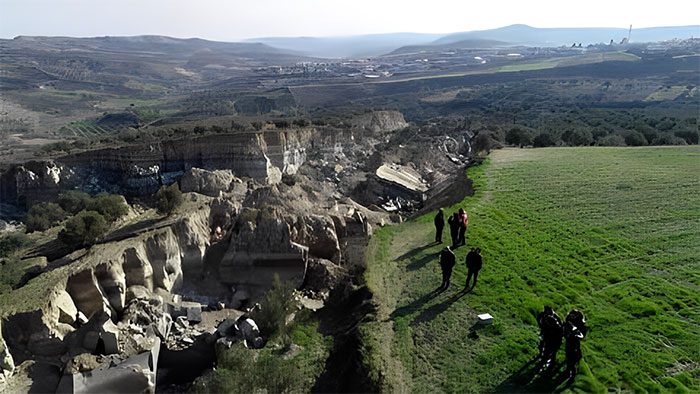The powerful earthquake in Turkey on February 6 created a 300-meter-long chasm that split a lush olive grove.
The olive grove mentioned is located in the Altınozu district in southeastern Turkey, bordering Syria. The two halves of the grove were separated by a deep canyon-like chasm, reaching depths of over 40 meters and characterized by a sandy color, according to CNN.

The chasm dividing the olive grove in southeastern Turkey after the earthquake on February 6. (Photo: DHA).
The emergence of the chasm illustrates the devastating impact of the 7.8 magnitude earthquake on February 6, which claimed the lives of tens of thousands of people in Syria and Turkey and destroyed numerous cities.
Mr. Irfan Aksu, a local resident, told Turkey’s Demioren News Agency that when the earthquake struck, it produced an “unusual noise” in his area.
“Everything looked like a battlefield when we woke up,” he said.
Mr. Aksu urged experts to examine the area to predict potential future damages.
“This is not a small town; there are 1,000 houses and 7,000 people living here,” he stated. “Of course, we are scared… the earthquake could have struck right in the middle of our town.”
The earthquake on February 6 was the strongest to occur anywhere in the world since the 8.1 magnitude quake that struck near the South Sandwich Islands in the South Atlantic in 2021.
Turkey is no stranger to strong earthquakes, as it lies along tectonic plate boundaries. Seven earthquakes with magnitudes over 7.0 have struck the country in the past 25 years, but the disaster on February 6 was the deadliest.
Several factors contributed to the lethal nature of the earthquake. One of these was the timing of the quake. It occurred in the early morning, with many people still in bed, resulting in them being trapped under the rubble of their homes.


















































